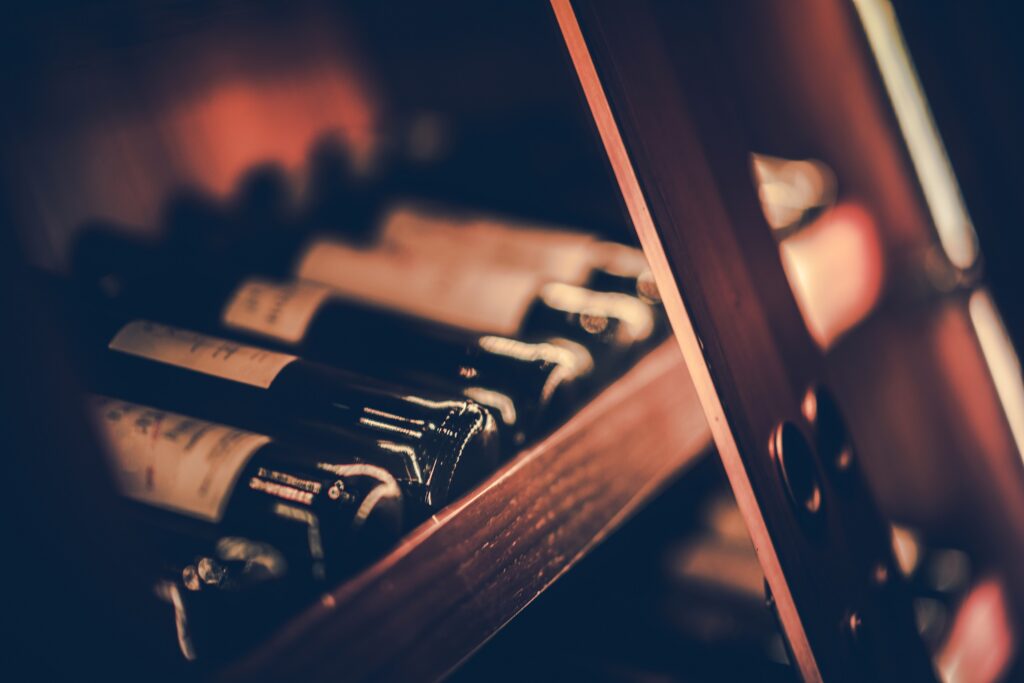Are you someone who enjoys the finer things in life, like a perfectly paired glass of wine with your meal? If so, then you are in for a treat as we delve into the art of gourmet pairings: the art of matching wine with food in Black Coyote Wines restaurants.
This culinary practice is not just about randomly selecting a bottle of wine to accompany your dish; it is an intricate process that requires knowledge, precision, and an understanding of flavor balance.
When it comes to gourmet pairings, one must consider the importance of flavor balance. The goal is to create harmonious combinations where neither the wine nor the food overpowers each other. It’s all about finding that perfect equilibrium where every bite and sip complement each other flawlessly.
From light and crisp white wines enhancing delicate seafood dishes to full-bodied reds elevating rich meats, each pairing has its own unique characteristics that contribute to the overall dining experience.
But it doesn’t stop at flavor balance alone – gourmet pairings also focus on enhancing aromas and textures. A well-chosen wine can bring out subtle nuances in both fragrances and mouthfeel, adding layers of complexity to your dining adventure.
Imagine savoring a velvety red wine alongside a succulent steak, where every bite not only tantalizes your taste buds but also caresses your senses with its rich aromas and silky smooth texture. These carefully curated combinations elevate both the food and wine individually while creating a symphony of flavors when enjoyed together.
So join us as we explore different wine and food combinations and uncover the secrets behind this exquisite art form. Whether you’re a seasoned connoisseur or just beginning your journey into the world of gourmet pairings, this article will provide you with insights and tips that will enhance your dining experiences at restaurants like never before.
Get ready for an unforgettable gastronomic adventure as we dive into the captivating world of matching wine with food in restaurants.
Key Takeaways
- Gourmet pairings involve matching wine with food in restaurants.
- The goal is to create harmonious combinations where neither the wine nor the food overpowers each other.
- Different wines can enhance different dishes, such as a rich Chardonnay with creamy pasta dishes or a light Sauvignon Blanc with fatty or oily foods.
- Sensory experiences are key in gourmet pairings.
The Importance of Flavor Balance
Finding the perfect balance between flavors is essential when pairing wine with food in order to create a harmonious dining experience. Achieving harmony is not simply about matching the color of the wine with the color of the dish, but rather, it involves understanding how different elements interact and complement each other.
The goal is to create a synergy where both the wine and food enhance each other’s flavors, creating a memorable taste sensation.
Perfecting palate is key when it comes to flavor balance. Each individual has their own unique palate, which means that what may work for one person might not work for another. It requires a deep understanding of both wine and food to be able to identify complementary flavors and textures.

For example, a rich and buttery Chardonnay can pair beautifully with creamy pasta dishes or roasted chicken, as they have similar profiles that enhance each other. On the other hand, a light and crisp Sauvignon Blanc can cut through fatty or oily foods like grilled salmon or fried calamari, providing a refreshing contrast.
By carefully considering these factors and experimenting with different combinations, you can unlock endless possibilities for creating unforgettable gourmet pairings in restaurants.
Enhancing Aromas and Textures
Enhancing the aromas and textures is like adding a whole new layer of delight to your dining experience. When it comes to gourmet pairings, sensory experiences are key. The right combination of wine and food can elevate your dining experience to new heights, allowing you to fully appreciate the flavors and intricacies of each dish.
By carefully selecting wines that complement the aromas and textures of your food, you can create a symphony of flavors on your palate. For example, a full-bodied red wine with robust tannins can enhance the richness and depth of flavors in a perfectly seared steak. The boldness of the wine cuts through the fatty marbling, creating a harmonious balance that tantalizes your taste buds.
Similarly, when pairing wine with delicate seafood dishes, opting for a crisp white wine can help enhance the lightness and freshness of the flavors. The acidity in the wine can cut through any richness or butteriness in the dish, providing a refreshing contrast that elevates both the aroma and texture.
Incorporating these sensory experiences into your dining experience not only enhances individual dishes but also creates an overall elevated dining experience. Each sip and bite become moments of pure pleasure as you savor every nuance brought forth by these thoughtfully paired combinations.
So next time you dine out at a restaurant known for its gourmet pairings, take advantage of this art form by exploring different combinations that enhance both aromas and textures – it may just be an unforgettable culinary adventure waiting to happen!
Exploring Different Wine and Food Combinations
Indulge in the dance of flavors and embark on a tantalizing culinary journey as you explore the harmonious symphony created by different wine and food combinations.
The world of gourmet pairings offers endless possibilities, allowing you to discover unexpected pairings that’ll surprise and delight your taste buds.
Imagine savoring a glass of crisp Sauvignon Blanc alongside a plate of creamy mushroom risotto, where the bright acidity of the wine complements the richness of the dish, creating a perfect balance.
Or perhaps you prefer to delve into regional wine and food matches, experiencing the authentic flavors of a specific area. Pairing a bold Cabernet Sauvignon with a juicy steak from Argentina showcases the seamless connection between their shared terroir, enhancing both elements and elevating your dining experience to new heights.
To further expand your palate, consider exploring lesser-known combinations that bring out hidden nuances in both wine and food. A surprising match could be found when pairing an off-dry Riesling with spicy Thai cuisine. The slight sweetness in the wine helps to cool down the heat from fiery dishes while highlighting their complex flavors.
Another intriguing combination is matching Chardonnay with buttery lobster. The rich creaminess of this white varietal beautifully complements the succulent meat, resulting in an indulgent symphony on your palate.
As you venture into exploring different wine and food combinations, remember that there are no hard rules but rather guidelines to enhance your dining experience. Be open-minded and willing to experiment with various pairings, allowing yourself to be pleasantly surprised by unexpected matches or discovering traditional regional gems that’ll transport you straight to their origins.
Cheers to embarking on this delectable journey filled with delightful surprises!
Conclusion
In conclusion, the art of matching wine with food in restaurants is a skill that requires a deep understanding of flavor balance and an appreciation for enhancing aromas and textures. By carefully selecting the right wine to complement your meal, you can create a harmonious dining experience that tantalizes your taste buds and leaves you craving more.
When it comes to pairing wine with food, it’s all about finding the perfect balance of flavors. The acidity, sweetness, and body of the wine should complement the flavors of the dish without overpowering them. A well-balanced pairing will elevate both the wine and the food, creating a symphony of tastes that dance on your palate.
But it’s not just about flavor balance – matching wine with food is also a sensory adventure. The aromas of both the wine and the dish should intertwine, enhancing each other and creating an olfactory delight. Imagine savoring a rich red wine alongside a perfectly grilled steak, where the smoky notes from the meat are beautifully mirrored in every sip. Or indulging in a crisp white wine paired with fresh seafood, where each bite is elevated by the citrusy undertones of your chosen bottle.
The world of wine and food combinations is vast and exciting, offering endless possibilities for exploration. From classic pairings like red meat with bold red wines to unexpected combinations like sushi with sparkling sake, there is always something new to discover.
So next time you dine out at a restaurant or host a dinner party at home, take some time to consider which wines will best complement your menu. Experiment with different pairings and let your senses guide you on this delicious journey. With every sip and bite, you’ll unlock new dimensions of flavor that will leave you truly satisfied.
Cheers to the artistry of gourmet pairings! May your future dining experiences be filled with exquisite meals perfectly accompanied by exceptional wines.



